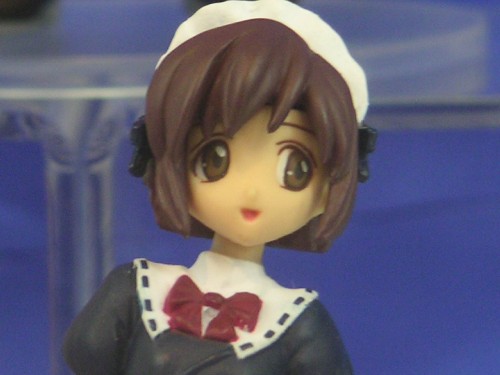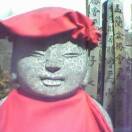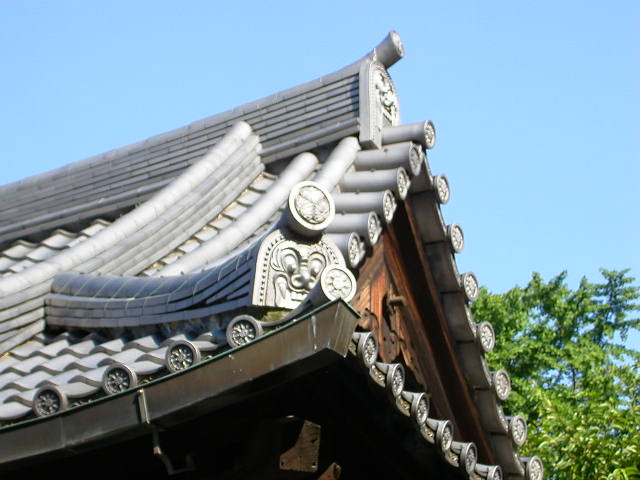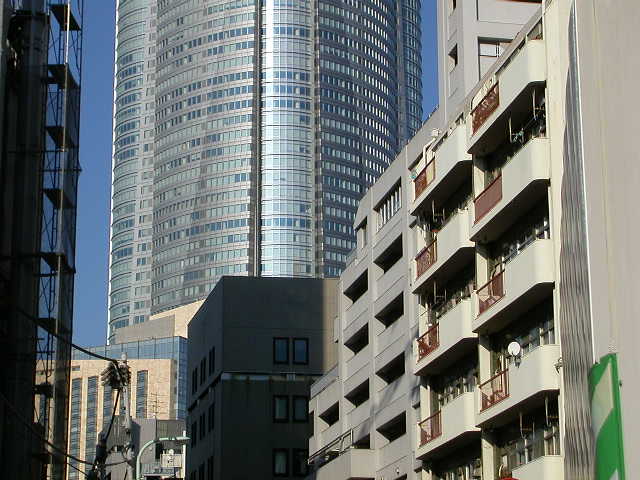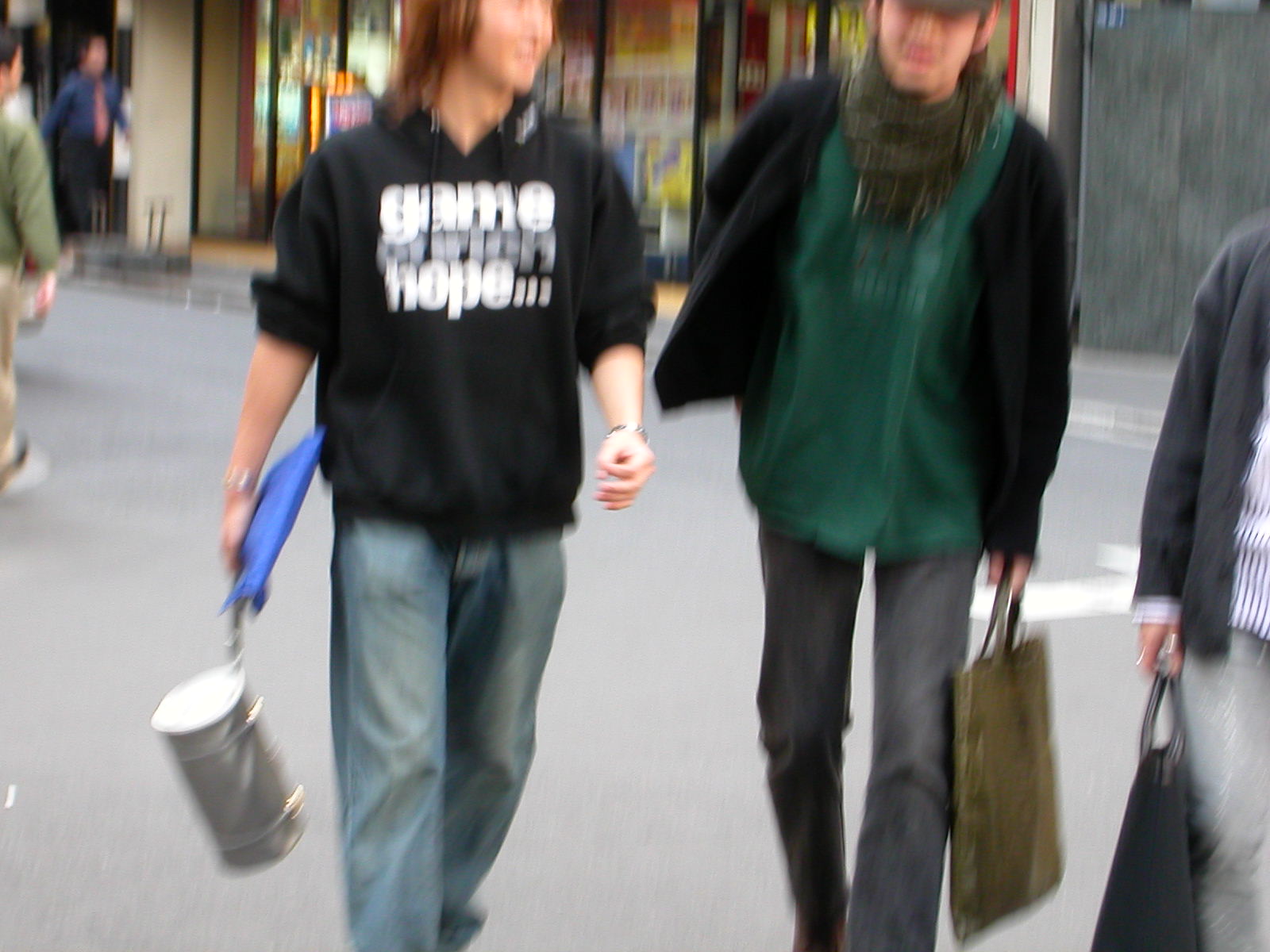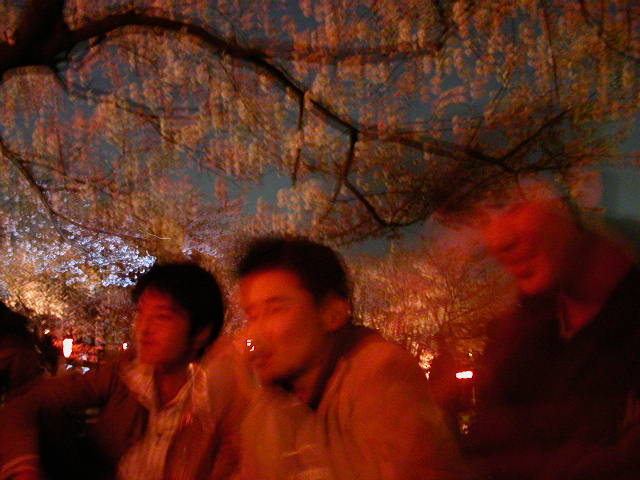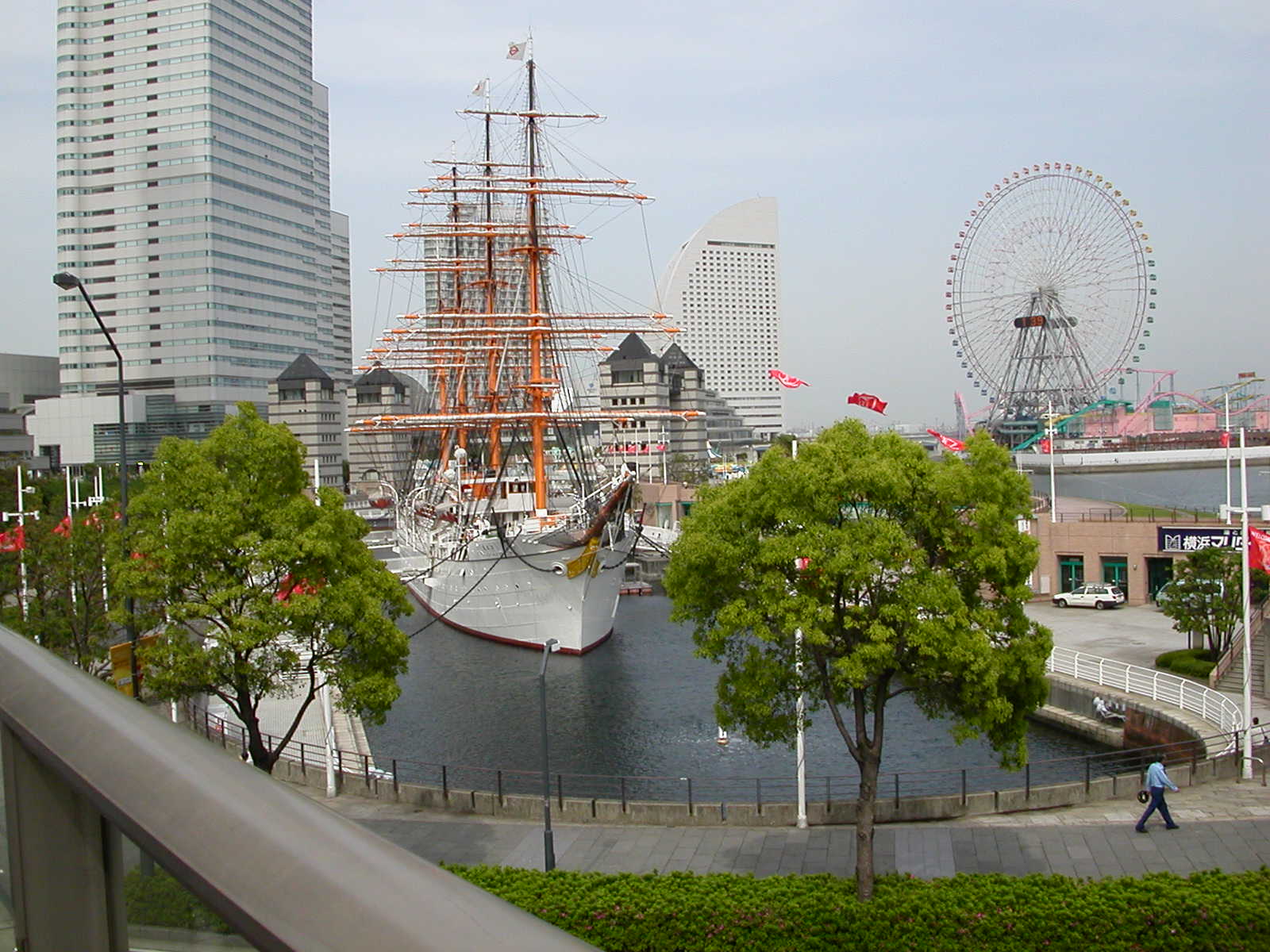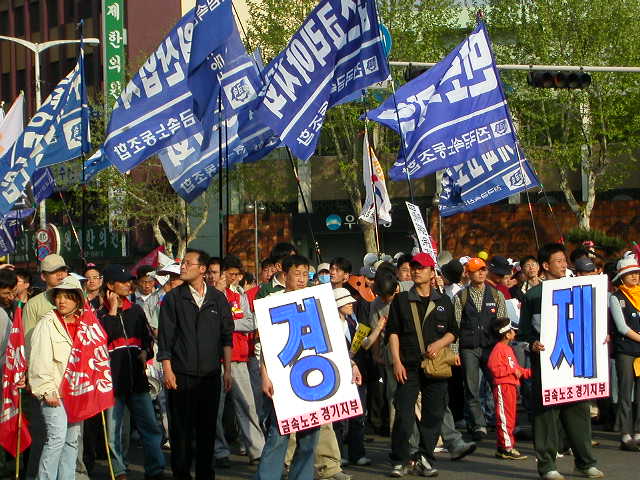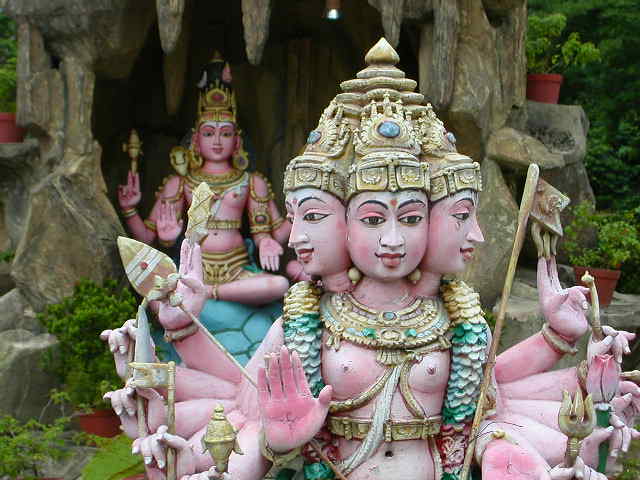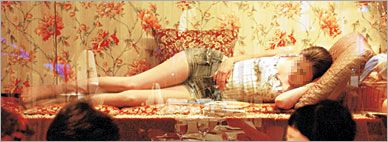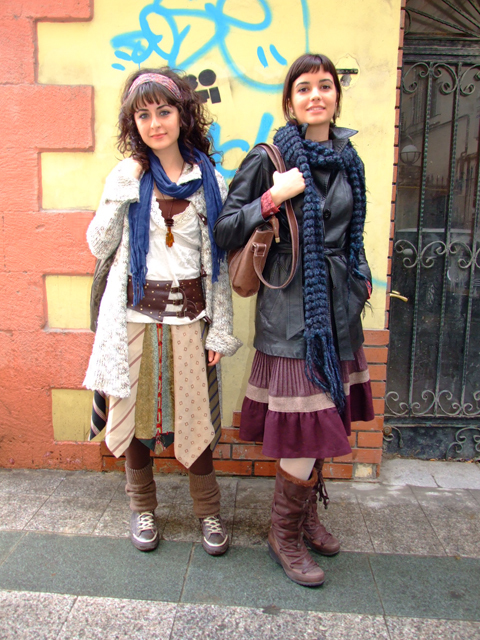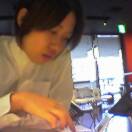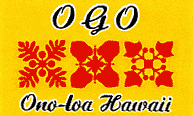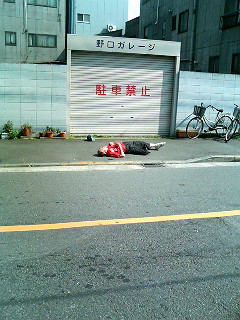| |||||||||||||||||
 Nowhere is the chaotic re-rendering of the West (with all its brand names and designer fashions) into something distinctly alien, something distinctly Japanese, more flamboyantly visible than at Harajuku, near Shinjuku in Tokyo.
The Harajuku district of Tokyo is a Mecca for artists, free spirits, and fashion trends and is one of the best places in town to go shopping for the fancy and the freaky free. The district is roughly centered around Omotesando-dori, Japan's own Champs-Elysee lined with elm trees. It is along this avenue and the nearby district of Aoyama that you'll find restaurants and trendy designer boutiques like Chanel, Dior and Vuitton. Omotesando-dori is also home to Harajuku's latest attractions, Omotesando Hills (scrowl down further for a special chapter on this place.) The basic situation is that the big department stores and high end boutiques line the avenue and the other big streets; the experimental smaller shops clog the backstreets. (Hint: the backstreets are naturally more fun!)
Nowhere is the chaotic re-rendering of the West (with all its brand names and designer fashions) into something distinctly alien, something distinctly Japanese, more flamboyantly visible than at Harajuku, near Shinjuku in Tokyo.
The Harajuku district of Tokyo is a Mecca for artists, free spirits, and fashion trends and is one of the best places in town to go shopping for the fancy and the freaky free. The district is roughly centered around Omotesando-dori, Japan's own Champs-Elysee lined with elm trees. It is along this avenue and the nearby district of Aoyama that you'll find restaurants and trendy designer boutiques like Chanel, Dior and Vuitton. Omotesando-dori is also home to Harajuku's latest attractions, Omotesando Hills (scrowl down further for a special chapter on this place.) The basic situation is that the big department stores and high end boutiques line the avenue and the other big streets; the experimental smaller shops clog the backstreets. (Hint: the backstreets are naturally more fun!)
South of Harajuku station on the bridge which leads to the Meiji Jingu Shrine is where a lot of Japan's alternative youth culture likes to hang out at weekends. Here there are teenagers in all manner of strange clothes, each weirder than the next and it really is a curious sight. Some are dressed as goths, some have their faces painted white like china dolls and some have bandages with fake blood pouring from them. They really don't mind having their photo taken, in fact they quite enjoy the attention.
Next to the Meiji Jingu Shrine is Yoyogi Park, which is a great place to go spend a lazy Sunday afternoon. There are lots of people performing here and there's something here for everyone ranging from juggling, rock bands and dance music to people drumming, bmx-ing, skating and painting. As they did on my first day in Japan, the crows ka ka kaw. Most interesting of all are the rockerbillies with their huge quiffs dancing (although not quite in time to the music) at the entrance to the park.
 ++++urban tribes++++
++++urban tribes++++
Harajuku been variously described as carnivalesque ("shopping on a Sunday on a pedestrians-only street in Shinjuku, Shibuya, or Harajuku feels like the Japanese equivalent of Mardi Gras in New Orleans or Carnival in Rio, with money and packages taking the place of music and dance") and subversive ("Insofar as the street style of Harajuku teens relies on handmade clothing and idiosyncratic, individualistic, and unexpected combinations of styles in order to bypass the hegemony of readymade clothing," one online essayist wrote, "this movement reflects a subcultural movement with some power and significance. As long as the subculture can keep ahead of the market forces that are constantly on its tail, there will remain an element of political significance in the way that these subcultures refuse to fit in, refuse to live by the rules of productivist society.")
On weekends and evenings Harajuku is packed with neverending, cascading crowds of young Japanese dressed in wild, fanciful outfits. Make that read "neverending, cascading tribes of young Japanese", for Harajuku is the homeland of a number of different tribal entities. On her song Harajuku Girls Gwen Stefani sings: "In a pedestrian paradise. Where the catwalk got its claws. A subculture in a kaleidoscope of fashion. Prowl the streets of Harajuku (. . .) Putting on a show , when you dress up in your clothes, wild hair color and cell phones, your accessories are dead on. Harajuku girls you got the wicked style. I like the way that you are. I am your biggest fan." There are many fashion styles, and many different groups who spend time in this area. You may see people dressed in the following styles: Gothic Lolita, Wamono, Decora, Rockabilly, Second-Hand Fashion, Cyber Fashion. (See the Magazine and Book FRUiTS).
Lolita fashion emphasizes Victorian-style and Edwardian fashion girl's clothing and often aims to imitate the look of Victorian porcelain dolls. Gothic Lolita is the best-known of the various "Lolita" looks. (Other categories include "Classic Lolita", which is often more mature-looking and contains more muted colours and floral prints and "Sweet Lolita" which is identified by childish pastel colours and cute prints.) (Source for all this: Wikipedia.)
Gothic Lolita style is usually a combination of black and white, often black with white lace and typically decorated with ribbons and lace trims. Skirts are knee length and may have a crinoline or petticoat to add volume. As in mainstream Japanese fashion, over-knee socks or stockings are popular. White or black tights are also common. Child-like shoes or boots such as Mary Janes, complete the look. Frilly, ruffled or lace-trimmed Victorian blouses are also popular with Gothic Lolitas and designs are usually modest, sometimes with long lace-capped sleeves and/or high-necked blouses.
Some additions may include mini top hats, parasols, and lace headdresses. Mostly black or white, headgear might consist of a headband with ruffles, ribbons, lace or bows, an alice band with a bow or sometimes even a Bonnet (headgear). Hair is often curled or a curled wig is worn to complete the porcelain doll look. Blond or black are the most popular hair colours.
Wamono is a style that mixes traditional Japanese clothing with western clothing styles. The brand name Takuya Angel is an example of this style.
Decora comes from the word "Decoration" and is a colorful style, usually with layered bright clothing and a emphasis on "cute" and brightly colored accessories.
Rockabilly: For a glimpse of the Tokyo Rockabilly scene, watch this YouTube movie: TOKYO Rockabilly Club WEIRD Japan Social Group.
Second Hand Fashion/Classic Clothes: Of all the various Tokyo crowds, this is the one I probably gravitate towards the most. For a complete guide to the Second Hand shops and centers of cultural interest in Harajuku/Shibuya, visit this site: Shibuya Shopping.
Tokyo's vibrant Harjuku district has been the hip and happening force behind much of Asia's cutting-edge underground culture. The area used to be the home of the US military right after World War II. In 1964, it housed many of the athletes during Tokyo's Olympic Games.
Inspired by the international influences of the Olympics, Harjuku became the epicenter for everything different in the late '60s. Today, an eccentric cast of hippies, punks, rockabillies, street performers still flock to Takshita Street, Meiji Dori Avenue and Omotesando Dori Avenue to hang out and show off their distinct style. (Source: Arjan Writes.)
This is lifted from one of the best guides to Harajuku on the Web: Harajuku Lovers: "Harajuku streetstyle had its roots way back in the 1950s through the introduction of American cultural influences which moulded the origin of a fashionable rebellious youth trend setters called the Harajuku tribe.
"Through the next two decades a variety of tribes (zoku) appeared, disappeared and reemerged, styles came and went, but it's fair to say, that nothing really radical ever stood out and made history.
"The early 1980s were more significant, a new kind of intellectual gothic wave of music and fashion took over Harajuku... Shojo Stuff, Virtual Pure Girl (related to the controversial Otaku Culture) who adopted the French dolls fashion to create Loli Goth.
"You might have heard of LaForet Shopping Center, since back in 1978 it has made itself the prime outlet source for the innovative and latest Harajuku street fashion. A fantastic variety of Lolita Goth clothing is specifically sold by LaForet Boutique."
"You're walking around Harajuku on a busy weekend," Nick Jones writes in a recent article for Tokyo's Metropolis magazine. "With these crowds, it would be bad advice to tell you to do anything except look where you're going. But step back for a minute and keep your eyes on the ground. See the parade of fresh footwear all around you? This city is sneaker mad.
"'Japan is the most unique place to buy shoes. It offers the most variety for sure,' says Woody, creator and editor of Harajuku-based footwear importer EuroPacific. 'They want variety and they want color. They want to walk into a store and see 25 brands and a nice selection from each, and that's what makes it interesting.' Euro-Pacific also operates high-end stores nationwide under the shoe Bar name.
"Footwear fads are most visible in chain stores like ABC-Mart and Asbee. These behemoths are multi-floored, wall-to-wall shoe heavens. But to get to the soul of the culture, you have to hunt out hole-in-the-wall shops in the backstreets of Harajuku. 'There's a certain mystery to it,' says Woody. 'Like the fact that the Bathing Ape store doesn't have a sign...'"
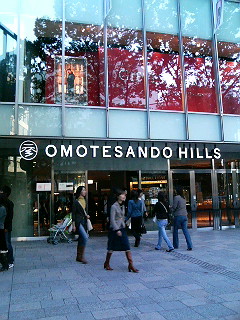 ++++omotesando hills++++
++++omotesando hills++++
This is from the makers of Roppongi Hills, the mighty Mori construction company. This was what Mori had in mind when they put Omotesando Hills on the drawing boards:
"2006 will see a quantum leap in the development of this dynamic district. Omotesando is a world unto itself: home to the creative and sophisticated people who have set trends in Japan and throughout the world. This vibrant district is now preparing for a new community, designed by and for those who love Omotesando. A world-class setting for new encounters, discoveries, and ways of enjoying life in natural surroundings, courtesy of Mori Building.
"Omotesando Hills, with approximately 250 meters of frontage on Omotesando, will form a multipurpose complex consisting of six floors above ground and six below: commercial facilities will be located from the third underground level through the third floor above ground; 38 apartments spread over five floors on both the east and west wings; for parking, the bottom three floors will hold 200 vehicles. A central atrium and enclosed slope will connect stores and restaurants. The atrium will allow natural light into the underground levels. The residential section of the complex will include an east wing (on the Aoyama side) and a west wing (on the Harajuku side), both in the sunny uppermost levels of the building, with zelkova trees marking the changing seasons. Building management will ensure safety, security, and comfort. Apartment access will be separated from visitor routes to the retail facilities. The rooftop will be planted with lush greenery, while those in the residential section will enjoy verdant vistas stretching north of the site."
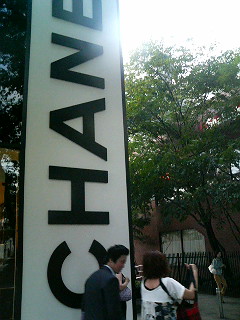 Chanel: 渋谷区神宮前6−31−21.
Chanel: 渋谷区神宮前6−31−21.
6-31-21 Jingumae, Shibuya Ward, Tokyo.
Phone: 03/3409-5017. Web: http://www.chicago.co.jp/store.htm.
Variety vintage. T-shirts, training gear, jeans, hats, coats, kimono, haori, modern clothing made from kimono, much more. Has several stores, mostly in Tokyo. At the Harajuku branch, you can even buy a used kimono -- talk about select classic clothing!
The complete store list is as follows:
Omotesando Store/Tokyo: 6-31-21 Jingumae Shibuya Tokyo. Phone 03/3409 5017.
Jingumae Store/Tokyo: 4-26-26 Jingumae Shibuya Tokyo. Phone 03/5414 5107.
Shimokitazawa Store/Tokyo: 5-32-5 Daizawa Setagaya Tokyo. Phone 03/3419 2890.
Sapporo Store: 1-3 Nishi Minami 1 Jyou Chuou Sapporo Hokkaido. Phone 011/219 2202.
Fukuoka Store: 1-15-35 Daimyo Chuou Fukuoka. Phone 092/739 0165.
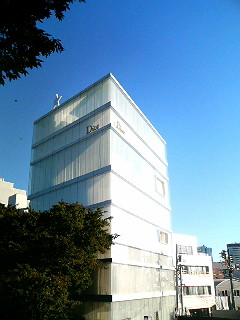 Dior: 渋谷区神宮前6-19-16第3宇都宮ビル1F
.
Dior: 渋谷区神宮前6-19-16第3宇都宮ビル1F
.
1st Floor Number 3 Utsunomiya Building, 6-19-16 Jingumae, Shibuya Ward, Tokyo.
Phone: 03/3486 6716.
As Ben Williams wrote in the NYMag: "In New York, flashy fashion exhibits and stylishly curated gift shops are making museums seem more like stores. Meanwhile, in Tokyo, the world's hippest architects are making stores seem more like museums. A seven-story Tod's, by Toyo Ito, with exterior walls that look like glass tree branches, is the latest angular masterpiece on Omotesando Avenue. It joins Dior's shimmering white boutique (by SANAA) and the glowing diamond bubbles of Prada (by Herzog & de Meuron) on the Aoyama district's nouveau-luxe retail strip. Nearby in Harajuku, Lanvin en Bleu, the French label's raffish new Japan-only men's casual line, has a copper-colored façade pockmarked with hundreds of tiny holes; a few blocks away, the modernist furniture store hhstyle.com just opened a squat, carbon-black rhomboid extension by Tadao Ando, devoted to Armani Casa and Boffi. And at the new five-floor KDDI building at the end of Harajuku’s main drag, Takeshita Street, Guggenheim-esque circular ramps offer prime ogling of gorgeous cell phones, like Marc Newson's ultrathin Talby, which you'll never find in America."
When I waltzed past there today, there was a rack of shirts out the front selling for just 100 Yen... but maybe that was because it was an end of summer sale.
Up the road from East Village you can find Mesa, another select used clothing, which boasts badges... tonnes of them. Also plenty of shoes and French hip-hop stuff on the soundsystem, ultracool Japanese staff.
This is more like a gorgeous house than a boutique, but a boutique it is. When I go in there I keep scratching my head asking myself: Is this really a store... isn't it just some chick's house? Where are the wares?" And then I see the short rack of dresses discreetly shoved into the corner, and I realize this place does indeed rely on selling stock. And such beautiful stock it is!
Refined minimalism is the taste which rules the day at Lamp Harajuku. This is the future of feminine Japan!
4th floor San Forest Building, Jingumae, Shibuya Ward, Tokyo.
 Lamp Harajuku: 4-28-15 Jingumae Shibuya-ku Tokyo.
Lamp Harajuku: 4-28-15 Jingumae Shibuya-ku Tokyo.
Phone: 03 (5411) 1230.
今回はB1F、2Fをご紹介。「女の子の二面性」をコンセプトに様々なデザイナーが手がけた商品をセレクトしたショップ。2Fは多くの女性の憧れ「ROSE」がテーマ。少女っぽさよりも女っぽさを強調した、シルクやベルベットづかいの商品がメイン。ポップではない、色や柄が多い。内装はヨーロッパの古いホテルのような雰囲気で、アンティークの什器、壁紙が印象的。B1Fはギャラリーになっており、年4回程お店のコンセプトに合ったアーティストの作品を紹介。ショップ全体が常に変化する女の子の内面を表しているようだ。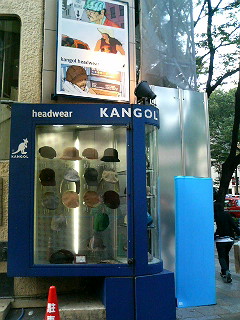 Kangol Shops: 渋谷区神南1-11-5 ダイネス壱番館1F.
Kangol Shops: 渋谷区神南1-11-5 ダイネス壱番館1F.
1st Floor Dainesu Ichiban Kan, Jinnan, Shibuya Ward.
Phone: 03/3464 7705.
Puma: 渋谷区神南1-13-4.
1st floor Harajuku Quest Building, 1-13-4 Jingumae, Shibuya Ward, Tokyo.
Phone: 03/3401 6100.
Another Metropolis sample follows here:
Bitter rivals of adidas for 54 years, having been established by Adolf Dassler's disgruntled brother Rudi, Puma is still battling it out with the three stripes for dominance of the retro sneaker market. Puma's latest move in the war is the unveiling of the world's second Puma concept store (the first is in Santa Monica, Calif.) late last year in Harajuku. As might be expected from a concept store, this one boasts a smart, clean interior and is sparsely stocked with high-end Puma products. The Italian-designed revival line, Platinum Collection, is the mainstay of this sneaker freak's paradise, but specially selected accessories, bags and clothes from other lines do make their way into the store. If you need to get kitted out for the gym, get down to Kanda, where "concept" means high-brow, high-fashion, high prices. Those who care about what message their footwear communicates won't want to miss the hot releases due in store this season. With the resounding success of the Puma/Sparco boxing boots behind them, more dual name sneakers are in the cards, including a new Jil Sander design. This store is the only place to be seen buying that dinky gym bag, a styling T-shirt or a good ol' pair of Clydes.
The joint is open from 11am to 8pm.
It is a steamy Sunday afternoon in August, and the streets of Shibuya are jammed with the usual packs of fashion misfits. I stopped at a used clothes shop called Source. In the Sun Forest Morita Building, on the 4th floor. In this part of town there is a used clothes store every 20 metres or so, so move on folks and find a better shop!
As the sign says, open from 1pm to 9pm.
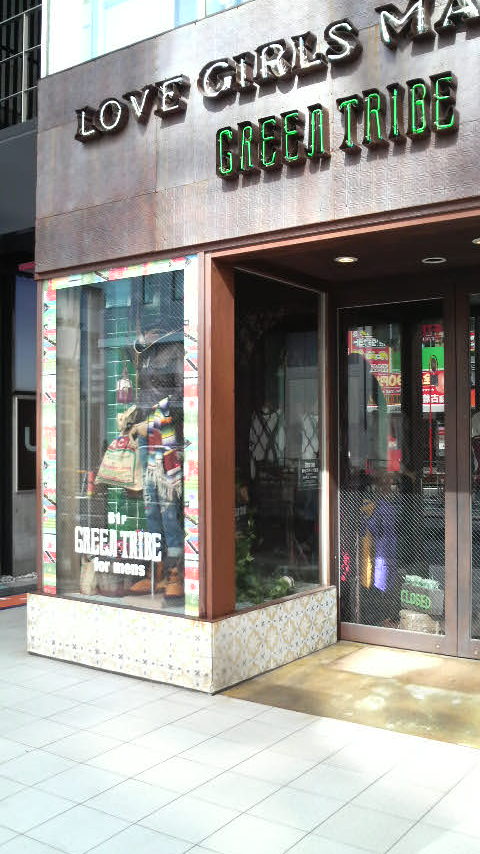
CAT STREET 渋谷から歩いていくならやっぱりCATSTREET! TATTOO ART BAROQUE ボンデージファッション、タトゥー 神宮前4-25-33 3478-1481 FLAMINGO CLUB 原宿店 手作り雑貨 オリジナル家具 神宮前6-7-20 3486-5650 ボンバー 原宿店 アクセサリーパーツ 神宮前6-14-20 3498-8707 ARIZONA FREEDOM インディアン・ジュエリー ほか 神宮前5-17-25 2F 3486-2996 WIRED EAST カフェ 2Fはアメリカ、フランスのストリート系ファッション店 神宮前6-15-7 3407-9899 NEW FUNK inc ゴアトランス系クラブファッション 神宮前6-16-7-202 5485-3033 Achtung babe ファッション ヨーロッピアンのブランド ほか 神宮前5-29-8 3400-5007 ASZAKKA LINK OFFICIAL アズノゥアズがプロデュースする雑貨店 おしゃれな輸入アクセサリー、バックなど 神宮前6-19-12 5468-6834 MIRACLE WOMAN ROCK、タトゥのイメージのレディス SEXYなヒョウ柄のスカートなど 渋谷1-23-23 2F 3498-2592 GALLOP 渋谷店 ブランド スポーツシューズ VANS ほか 渋谷1-23-21 3797-9795
akihabara fashion shopping | fashion trends in japan
|
||||||
